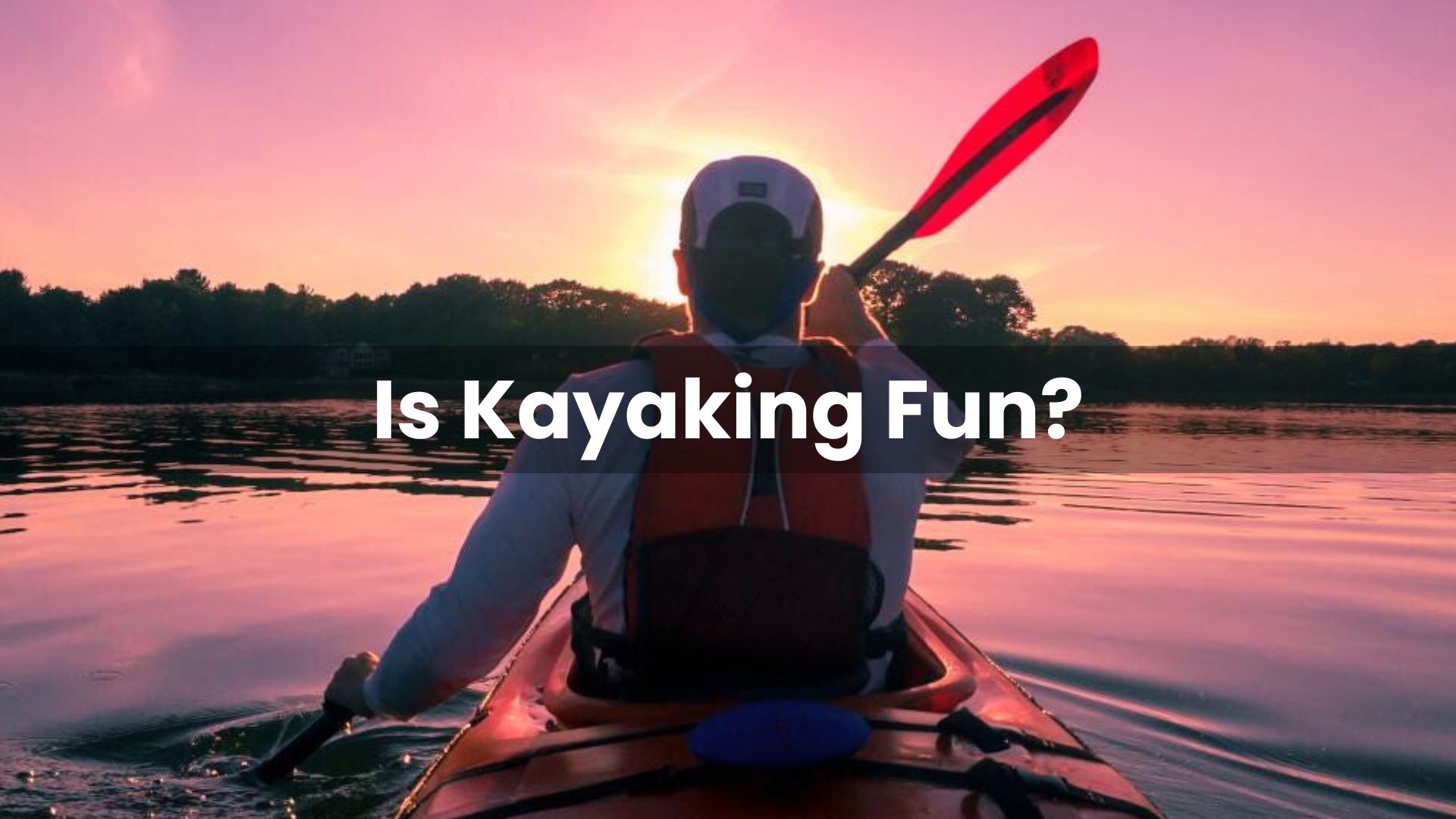Is kayaking fun? The short answer is a resounding yes! Kayaking is a popular outdoor activity that offers a unique way to explore nature, get exercise, and create lasting memories. Whether you’re a beginner or an experienced paddler, kayaking can be an incredibly enjoyable and rewarding experience.
In this comprehensive guide, we’ll explore why is kayaking fun is a question that can be answered with a resounding affirmative. We’ll address common concerns, provide tips for making the most of your time on the water, and delve into the many reasons why kayaking is such a fun and fulfilling activity.
From leisurely paddles on calm lakes to thrilling rides through whitewater rapids, there’s a kayaking experience for everyone. We’ll discuss the versatility of the sport and how it can be enjoyed by people of all ages and skill levels.
Is Kayaking Fun for Beginners?
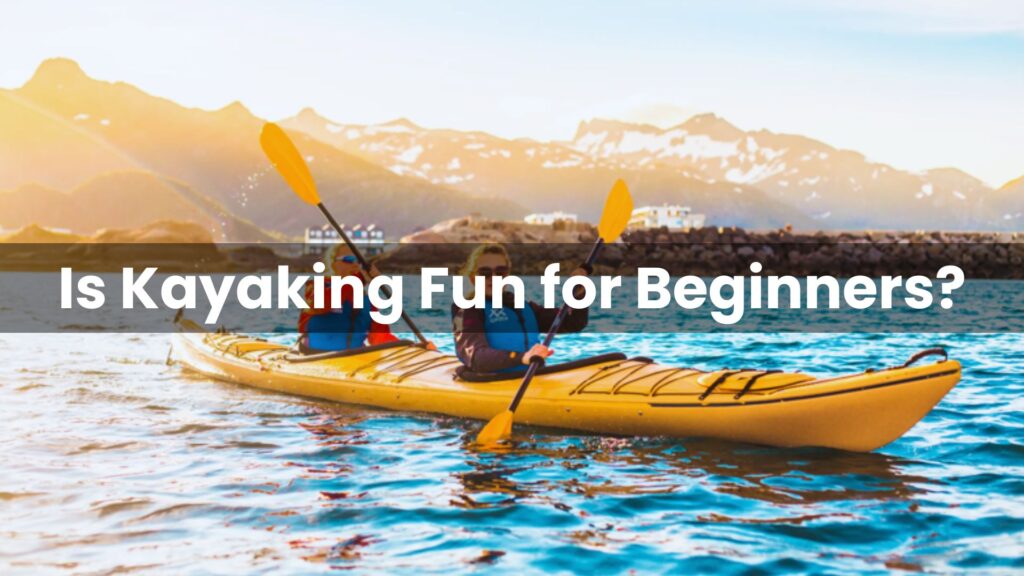
One of the most common concerns for those new to kayaking is whether they’ll be able to pick up the sport quickly and have fun from the start. The good news is that kayaking is relatively easy to learn, and with a little practice, beginners can quickly gain the skills and confidence they need to enjoy the sport.
The first step to having fun as a beginner kayaker is choosing the right type of kayak. Recreational kayaks are a great option for those just starting out, as they are stable, easy to maneuver, and suitable for calm waters. These kayaks are designed with comfort and stability in mind, making them ideal for leisurely paddles and exploring calm lakes and rivers.
Another key to having fun as a beginner kayaker is staying safe on the water. Always wear a properly fitted life jacket, and consider taking a beginner kayaking course to learn essential skills like paddling techniques, water safety, and how to navigate your kayak. With the right preparation and a positive attitude, beginners can quickly overcome any initial fears and discover the joy of kayaking.
The Thrill of Kayaking
For many kayakers, the thrill of the sport is a big part of what makes it so much fun. Whether you’re navigating through whitewater rapids, exploring a remote coastal area, or spotting wildlife from your kayak, there’s always an element of adventure and excitement involved.
One of the most thrilling aspects of kayaking is the sense of freedom and connection with nature that comes with being on the water. As you glide silently through the water, you’ll have the opportunity to observe wildlife, take in stunning landscapes, and enjoy a sense of solitude and peace that can be hard to find on land.
Whitewater kayaking is perhaps the most thrilling and adrenaline-pumping form of the sport. This type of kayaking involves navigating through rapids and challenging water features, and requires specialized skills and equipment. While whitewater kayaking is not recommended for beginners, it can be an incredibly rewarding and exciting experience for those with the proper training and experience.
Where to Go Kayaking
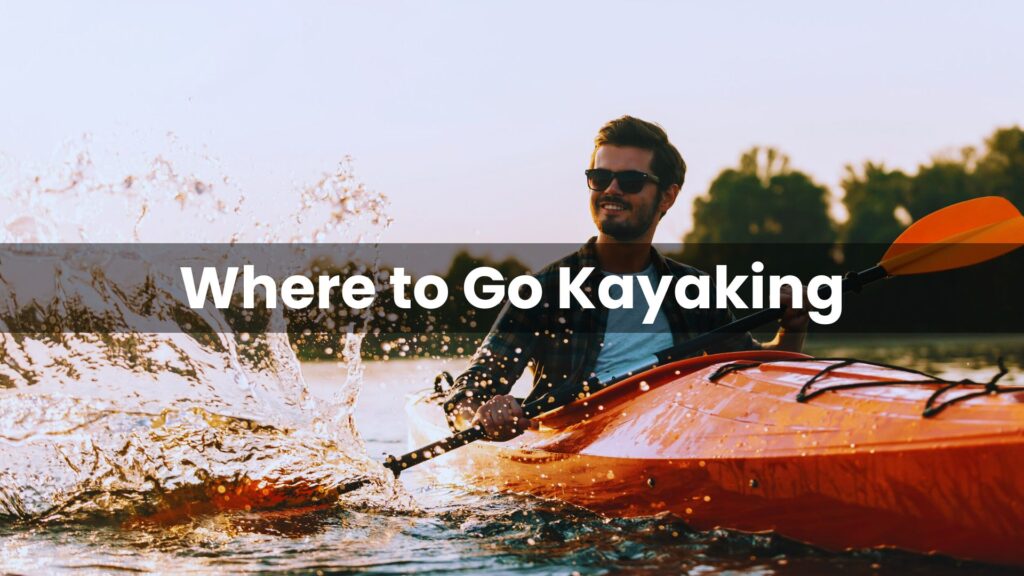
One of the great things about kayaking is that it can be enjoyed in a wide variety of locations, from calm lakes and rivers to coastal areas and even the open ocean. When choosing a location for your kayaking adventure, consider factors like your skill level, the type of kayak you’ll be using, and the type of experience you’re looking for.
For beginners and those looking for a more relaxed experience, calm lakes and slow-moving rivers are often the best choice. These environments offer a stable and predictable surface for paddling, and are less likely to present challenging water features or strong currents.
Coastal areas and the open ocean can be a thrilling and beautiful place to kayak, but they also come with additional challenges and risks. Strong winds, waves, and currents can make paddling more difficult, and there are often more obstacles to navigate around. If you’re interested in sea kayaking, it’s important to have the proper training, equipment, and experience to stay safe on the water.
No matter where you choose to kayak, it’s important to always check local conditions and regulations before heading out. Many popular kayaking spots have designated launch areas and rules for using the water, so be sure to familiarize yourself with these before setting out on your adventure.
Kayaking Equipment and Gear
While kayaking can be an affordable and accessible sport, having the right equipment and gear is essential for staying safe and having fun on the water. At a minimum, you’ll need a kayak, paddle, life jacket, and appropriate clothing for the weather conditions.
When choosing a kayak, consider factors like your height, weight, and skill level, as well as the type of water you’ll be paddling in. Recreational kayaks are a great choice for beginners and those looking for a stable and comfortable ride, while sea kayaks and whitewater kayaks are designed for more advanced paddlers and specific environments.
In addition to your kayak, you’ll also need a properly fitted life jacket (also known as a personal flotation device or PFD) to keep you safe on the water. Look for a life jacket that is comfortable, adjustable, and appropriate for the type of kayaking you’ll be doing.
Other essential gear for kayaking includes a paddle, which should be sized appropriately for your height and the type of kayak you’re using. You’ll also need appropriate clothing for the weather conditions, such as a wetsuit or dry suit for cold water, and sun protection for warm weather paddling.
While it’s possible to rent equipment for your kayaking adventures, investing in your own gear can be a great way to save money in the long run and ensure that you always have access to the equipment you need. Look for high-quality, durable gear that will last for many seasons of paddling.
Making Kayaking a Hobby
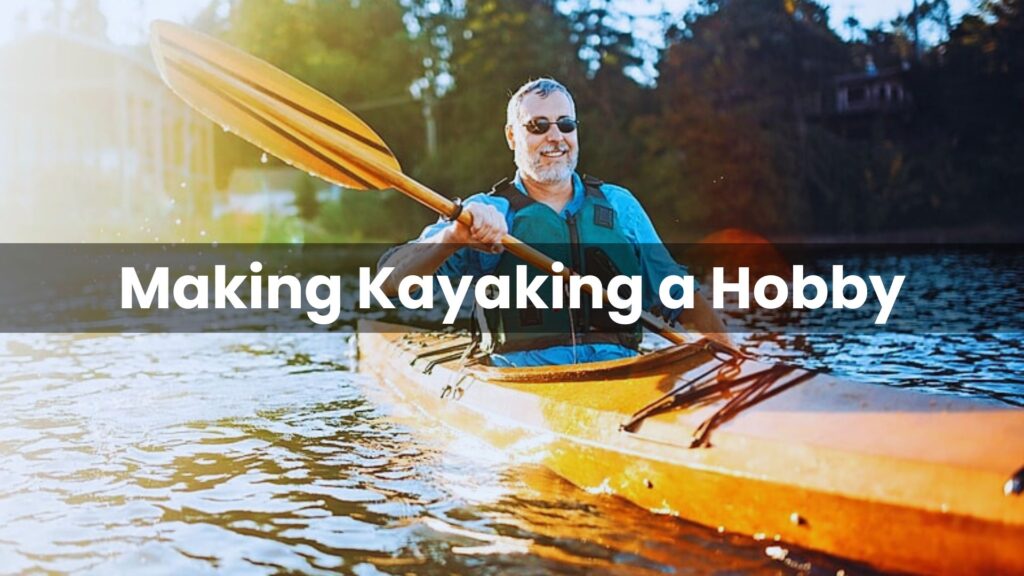
For many people, kayaking starts as a fun and occasional activity, but quickly turns into a lifelong hobby and passion. There are many reasons why kayaking makes such a great hobby, from the physical and mental health benefits to the opportunity to explore new places and connect with nature.
One of the great things about kayaking as a hobby is that it can be enjoyed year-round, in a variety of environments. Whether you prefer paddling on calm lakes in the summer or exploring coastal areas in the spring and fall, there’s always an opportunity to get out on the water and enjoy the sport.
Another benefit of making kayaking a hobby is the opportunity to connect with a community of like-minded enthusiasts. Many areas have local kayaking clubs and meetup groups that organize group paddles, classes, and other events. Joining a club or group can be a great way to meet new people, learn new skills, and explore new paddling locations.
For those looking to take their kayaking hobby to the next level, there are many opportunities to develop more advanced skills and techniques. From learning how to roll your kayak to mastering the art of paddling in rough water, there’s always room for growth and improvement in the sport of kayaking.
What Are the Basic Kayaking Techniques?
Forward Stroke: This is the most fundamental stroke used to propel the kayak forward. It involves reaching forward with one arm, followed by a sweeping motion that brings the paddle back towards your hip, using a combination of arm and torso movement.
Reverse Stroke: Used to stop or go backwards, this stroke is performed by placing a paddle blade in the water at your hips and pushing gently forward, away from your body, to slow the kayak down. Alternating sides can help keep the boat on a straight line as it slows.
Sweep Stroke: This stroke is used for turning and correcting the kayak’s direction. It modifies the forward stroke by reaching out away from the side of your kayak, making a wide C motion with your paddle blade to create more turning power.
Draw Stroke: This stroke allows you to move the kayak sideways, which is useful for docking or avoiding obstacles. To perform it, place the paddle vertically in the water next to your kayak and pull it towards you, then push it away.
Other important techniques include:
Proper paddle grip: Hold the paddle with your hands slightly more than shoulder-width apart, with a relaxed grip.
Torso rotation: Engage your core muscles by twisting your torso to generate power and efficiency in your strokes.
Feathering the paddle: Adjusting the angle between the blades can reduce wind resistance when paddling into the wind.
What Are the Best Places to go Kayaking?
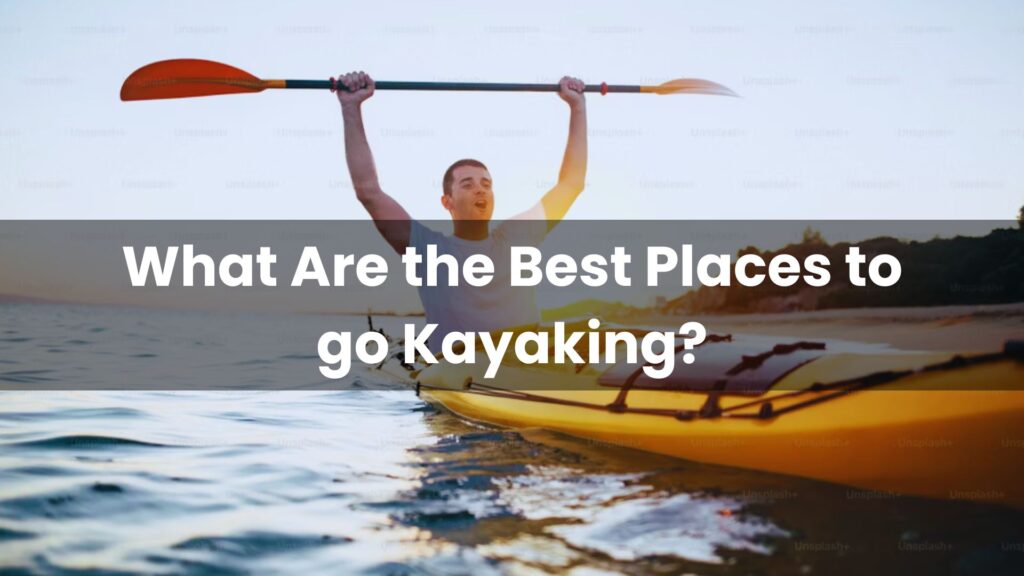
Lake Powell, Glen Canyon National Recreation Area, Arizona: This man-made reservoir offers a great kayaking experience with its twists and turns, and provides a variety of other activities like swimming, fishing, and hiking.
Kenai Fjords, Alaska: Encompassing the Harding Icefield, this area is known for its glacial-carved fjords, forests, and abundant wildlife like seals, sea otters, and whales.
Monterey Bay, California: Kayakers can enjoy views of Cannery Row and watch for wildlife like sea lions, seals, otters, and whales along the iconic Pacific coastline.
Potomac River, Washington D.C.: Kayaking down the Potomac offers views of the nation’s capital, including the Washington Monument, Lincoln Memorial, and Georgetown waterfront.
Boundary Waters Canoe Area Wilderness, Minnesota: This remote area of glacial lakes and streams in northern Minnesota is a popular destination for guided kayaking tours to spot wildlife like deer, moose, otters, and bald eagles.
Kaneohe Bay, Oahu, Hawaii: This sheltered bay is one of Hawaii’s calmer places to kayak, with opportunities to spot marine life and explore the barrier reefs and white-sand beaches.
What Are the Safety Tips For Kayaking
Always wear a properly fitting life jacket. Wearing a life jacket is the most important safety measure and can save your life in an emergency. Make sure it fits snugly around your chest, waist and neck.
Don’t drink alcohol and paddle. Alcohol and paddling don’t mix and can impair your judgment and coordination.
Dress for the water temperature, not the air temperature. Cold water is the biggest hazard and can quickly lead to hypothermia. Wear a wetsuit or drysuit if paddling in cold water.
Check the weather forecast and water conditions before heading out. Strong winds, thunderstorms and high waves can create dangerous conditions.
Let someone know your plans, including where you’re going and when you expect to return. This ensures someone knows your whereabouts in case of an emergency.
Know your limits and only paddle in areas you’re comfortable with. If you’re new to kayaking, start in calm waters and gradually work your way up to more challenging areas.
Be aware of your surroundings and watch out for potential hazards like rocks, branches, dams and other boats.
Keep your kayak in good working condition by checking for leaks, cracks or damage before each trip.
Have essential safety equipment on board like a first aid kit, communication device, and emergency gear.
Learn how to handle common emergencies like capsizing and getting lost. Take a kayaking safety course to learn proper technique and safety protocols.
Conclusion
In conclusion, the answer to the question “Is Kayaking Fun?” is a resounding yes! Kayaking is a versatile and enjoyable activity that offers a unique way to explore nature, get exercise, and create lasting memories. Whether you’re a beginner or an experienced paddler, there’s a kayaking experience out there for everyone. By choosing the right equipment, prioritizing safety, and approaching the sport with a positive attitude, you can quickly discover the joy and thrill of gliding across the water in your own kayak. So why not give kayaking a try and see for yourself why it’s such a fun and fulfilling activity?
Frequently Asked Question
Is kayaking a fun activity?
Yes, kayaking is generally considered a very fun and enjoyable outdoor activity. The peaceful gliding motion, connection with nature, and sense of adventure make kayaking a popular recreational pursuit.
What makes kayaking fun?
Some of the key factors that make kayaking fun include the tranquility of being on the water, the physical challenge of paddling, the opportunity to explore new waterways, and the sense of freedom and relaxation it provides.
Is kayaking suitable for beginners?
Absolutely. Kayaking is very beginner-friendly, especially on calm, flat waters. With proper safety gear and instruction, even novice paddlers can have an enjoyable and safe experience.
Can kids enjoy kayaking?
Yes, kayaking can be a great family-friendly activity. Many kayak manufacturers make models specifically designed for children, and with proper supervision and safety precautions, kids can have a lot of fun kayaking.
Is kayaking a good workout?
Yes, kayaking provides a full-body workout that engages the core, arms, shoulders and back muscles. It’s an excellent way to get exercise while enjoying the outdoors.
Are there any downsides to kayaking?
The main potential downsides are the risk of capsizing, exposure to cold water, and physical exertion required. However, these can be mitigated through proper preparation, safety gear, and pacing oneself.

Nigel Foster, born in 1952, is an esteemed sea kayaker, known for being the youngest to kayak around Iceland. His journey in kayaking started at 15 in Brighton, England. With a career beginning as a trainee instructor in Sussex, he later pursued teaching after attending Redland College, Bristol.
Foster’s notable expeditions include navigating the challenging waters of Newfoundland and the Hudson Strait. Despite facing intense conditions, his passion for kayaking never waned. He holds several British Canoe Union qualifications and has significantly contributed to the kayaking community through teaching and committee work.
In 1985, Foster expanded his horizons by assisting an expedition in Iceland and later founded his own kayaking business, sharing his expertise globally.
